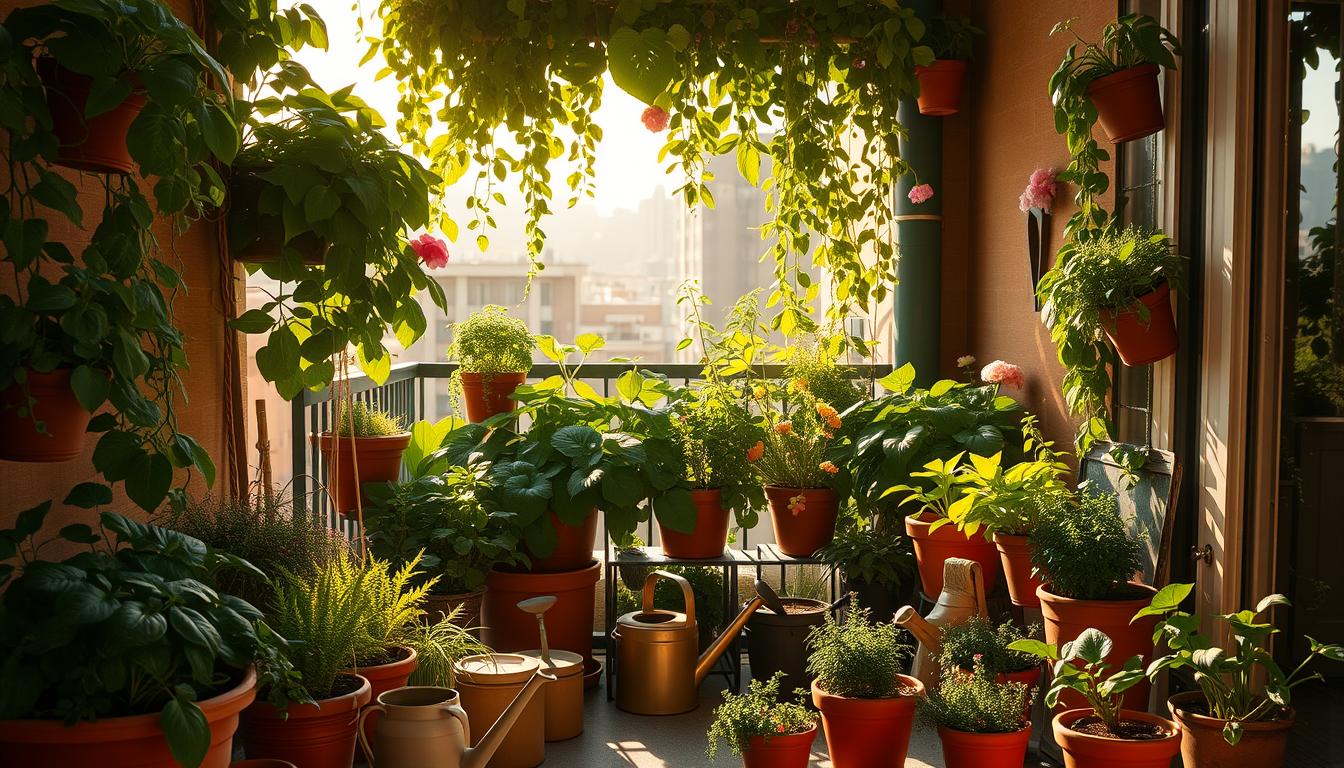Growing your own herbs, fruits, and vegetables is easier than you think, even in small spaces. With a few containers and some basic knowledge, you can create a thriving apartment food garden right at home. Whether you have a balcony, rooftop, or just a sunny windowsill, this guide will help you get started.
Begin with a few pots to learn the essentials, like sunlight requirements and container selection. Keep in mind that containers can triple in weight when watered, so consider your space’s weight limits. Many urban gardeners, like those in Brooklyn, have successfully grown fresh produce using USDA-approved methods for small spaces.
This beginner-friendly approach allows you to build your skills gradually. Start small, and soon you’ll enjoy the rewards of homegrown plants. Ready to take the first step? Let’s dive in!
Key Takeaways
- Small spaces can support thriving gardens with the right setup.
- Start with a few containers to learn the basics.
- Consider weight limits for balconies or rooftops.
- Sunlight and container selection are key factors.
- Urban gardeners have successfully grown produce in limited spaces.
- Begin with simple steps and gradually build your skills.
Why Start an Apartment Food Garden?
Urban living doesn’t mean you can’t enjoy the perks of gardening. Growing your own herbs and vegetables at home offers a range of benefits that go beyond fresh produce. It’s a rewarding way to connect with nature, even in the heart of the city.
One of the biggest advantages is cost savings. For example, growing herbs like basil can save you money compared to buying them at the store. Over time, these small savings add up, making apartment gardening a smart financial choice.
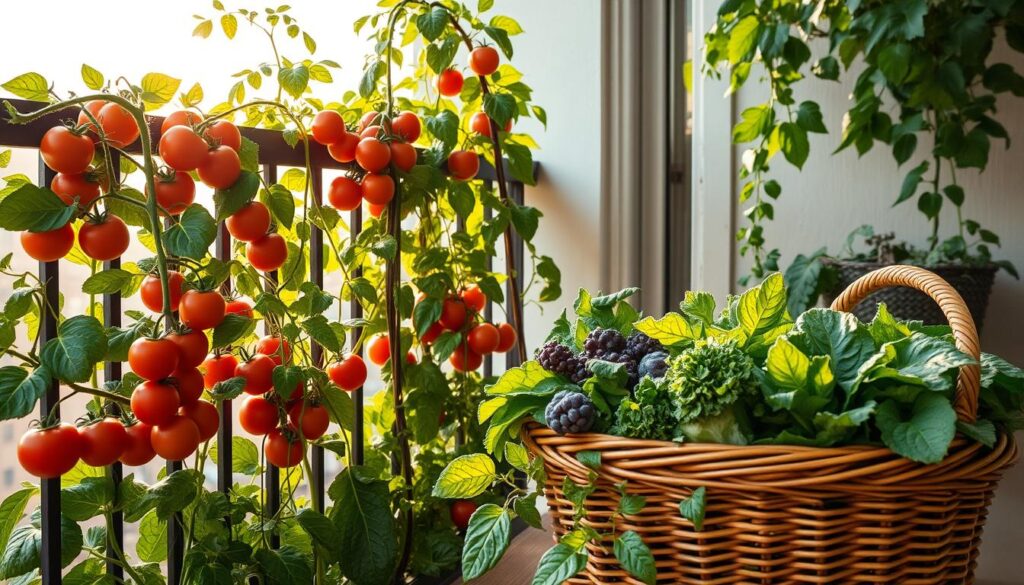
Gardening also boosts mental well-being. Nurturing plants can reduce stress and improve focus. It’s a calming activity that brings a sense of accomplishment. Plus, it helps counter “nature deficit disorder,” a common issue in urban areas.
Another key benefit is sustainability. By growing your own food, you reduce packaging waste and food miles. This small step can have a big impact on the environment. For instance, one NYC gardener harvested 15 pounds of produce monthly, proving that even small spaces can yield impressive results.
Finally, gardening is a great educational tool. It teaches children where their food comes from and encourages healthy eating habits. Whether you’re saving money, improving mental health, or helping the planet, starting a garden at home is a decision you won’t regret.
Choosing the Right Plants for Your Apartment Garden
Transforming your space into a green oasis starts with the right plant choices. Not all herbs, vegetables, and fruits are suited for indoor growing. By selecting varieties that thrive in containers, you can maximize your success and enjoy fresh produce year-round.
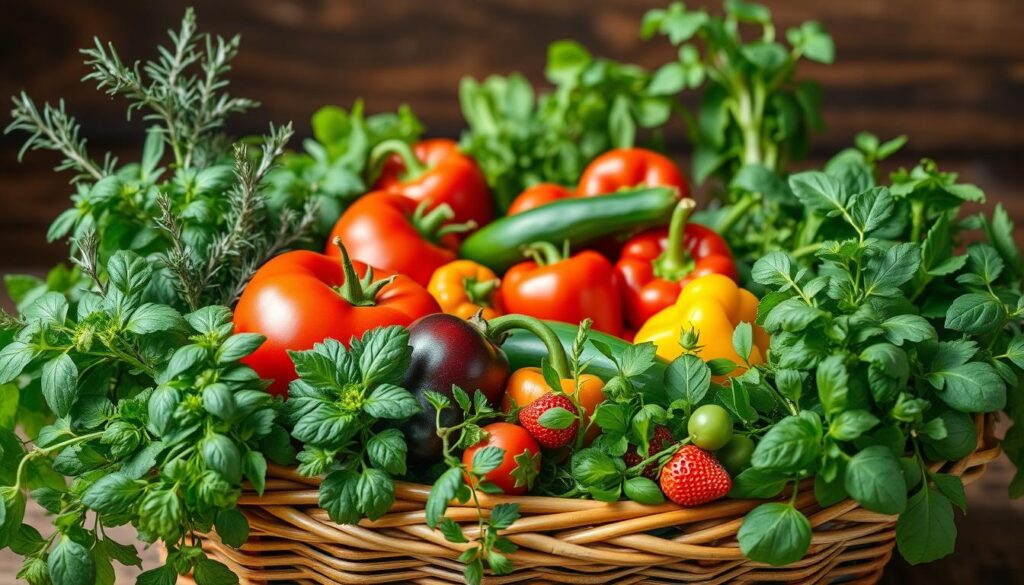
Herbs That Thrive Indoors
Herbs are a great starting point for beginners. They’re compact, easy to care for, and add flavor to your meals. Basil, especially the Genovese variety, grows well in sunny spots. French thyme and spearmint are also excellent choices for indoor spaces. These herbs require minimal maintenance and can be harvested frequently.
Vegetables Perfect for Small Spaces
When it comes to vegetables, opt for compact varieties. Baby bok choy is a standout, offering a high yield in small containers. Dwarf cucumbers and Bel Fiore radicchio are other space-saving options. For those who love fresh salads, lettuce and patio tomatoes are ideal. These plants thrive in containers and produce consistent harvests.
Fruits You Can Grow in Containers
Growing fruits indoors is easier than you might think. Dwarf citrus trees, like Meyer lemons, are perfect for sunny windowsills. Alpine strawberries can flourish in window boxes, adding a sweet touch to your setup. If you enjoy a bit of spice, hot peppers often outperform sweet peppers in containers. These fruits not only look beautiful but also provide a rewarding harvest.
By choosing the right plants, you can create a thriving indoor garden that suits your space and lifestyle. Start with a few favorites and expand as you gain confidence. Happy growing!
Setting Up Your Apartment Food Garden
Creating a thriving green space in your home starts with the right setup. Whether you’re working with a balcony or a sunny window, the key is to choose the right tools and techniques. This section will guide you through selecting containers, soil, and lighting to ensure your plants flourish.
Selecting the Right Containers
Choosing the right containers is crucial for success. Self-watering pots are a great option for beginners, as they reduce the risk of over or under-watering. Upcycled buckets or modified 14-gallon bins can also work well, especially for larger plants. Ensure your containers have proper drainage to prevent root rot.
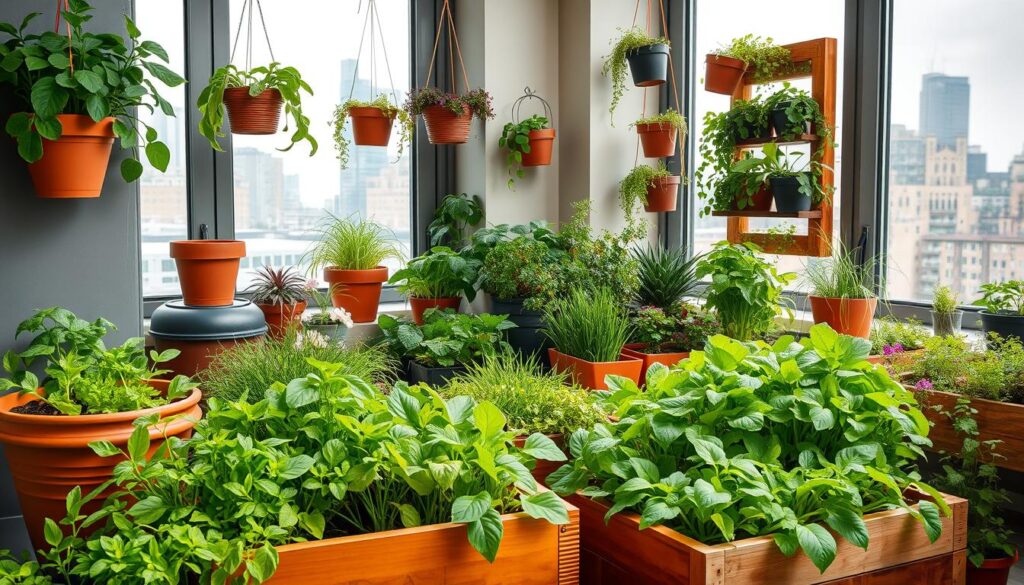
For those with limited space, consider vertical gardening. Tiered wire shelves can triple your growing area, making the most of your available space. Always use waterproof liners to protect hardwood floors or other surfaces.
Choosing the Best Soil and Fertilizer
The right soil mix is essential for healthy plants. A 1:1 ratio of Happy Frog potting soil to coconut coir works well for moisture control. Coconut coir helps retain water while allowing roots to breathe, making it ideal for indoor growing.
Fertilizers provide the nutrients your plants need to thrive. Organic options like compost or worm castings are excellent choices. Apply fertilizers according to the plant’s needs, ensuring balanced growth.
Maximizing Light with Grow Lights
Natural light is ideal, but grow lights can supplement or replace it. Full-spectrum LED lights mimic sunlight and are energy-efficient. For flowering plants, red/blue LED lights are more effective. Program your lights for 15-hour daily cycles to simulate natural daylight.
Position your lights close to the plants but not too close to avoid heat damage. Adjust the height as your plants grow to ensure consistent light exposure. With the right setup, you can grow fresh produce year-round, even in low-light conditions.
For more tips on starting your indoor garden, check out this beginner’s guide.
Essential Tips for Maintaining Your Garden
Keeping your plants healthy and thriving requires consistent care and attention. From watering to feeding and pest control, these practices ensure your green space remains vibrant and productive. Let’s explore the key steps to maintain your setup effectively.

Watering Your Plants Correctly
Proper water management is crucial for plant health. Use the finger test: insert your finger 1-2 inches into the soil. If it feels dry, it’s time to water. Overwatering can harm roots, so ensure your containers have drainage holes.
For balcony setups, consider sink-attached hoses for easy access. This hack saves time and ensures consistent hydration. Remember, different plants have unique water needs, so adjust accordingly.
Feeding and Fertilizing Your Plants
Plants need nutrients to grow. Use fertilizing methods like water-soluble options for quick absorption or slow-release formulas for steady nourishment. For leafy greens, apply fish emulsion weekly to boost growth.
Organic choices like compost or worm castings are excellent for long-term soil health. Always follow the recommended schedule to avoid over-fertilizing, which can damage plants.
Dealing with Pests and Diseases
Preventing pests and diseases is easier than treating them. Neem oil applications every 14 days can deter common insects. If you notice infected plants, isolate them immediately to prevent spreading.
Humidity management is also vital. Use pebble trays or ultrasonic humidifiers to maintain optimal moisture levels. This helps prevent fungal issues and keeps plants healthy.
| Maintenance Task | Frequency | Tips |
|---|---|---|
| Watering | As needed | Use the finger test to check soil moisture. |
| Fertilizing | Weekly | Apply fish emulsion for leafy greens. |
| Pest Control | Every 14 days | Use neem oil to deter insects. |
“The key to a thriving green space is consistency. Small, regular efforts yield big results over time.”
Harvesting and Enjoying Your Homegrown Produce
The joy of harvesting your own fresh produce is unmatched, especially when it’s grown at home. Knowing when and how to pick your crops ensures the best flavor and longevity. Let’s explore the key steps to make the most of your harvest.
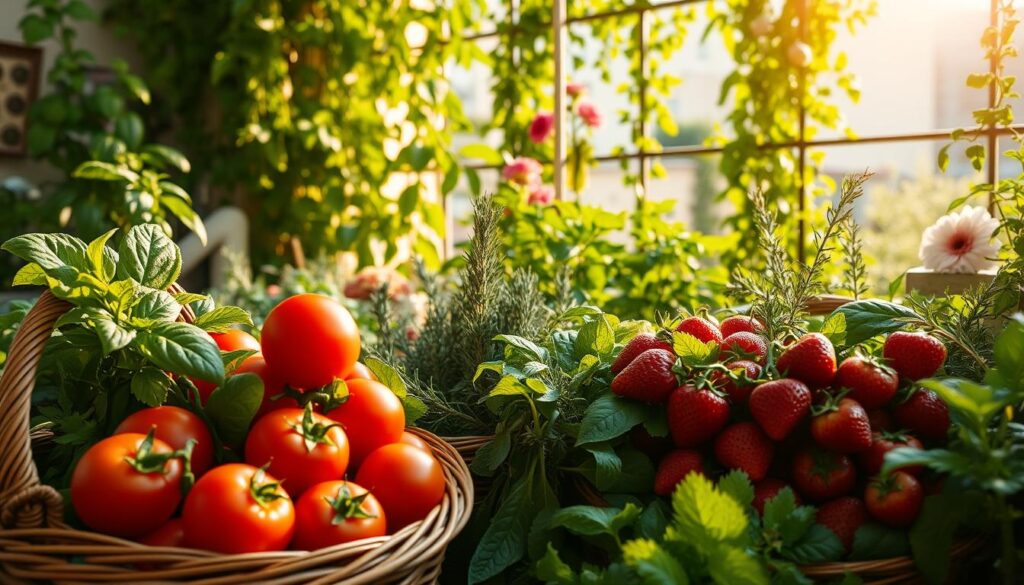
When and How to Harvest
Timing is everything when it comes to harvesting. For greens like lettuce, use the cut-and-come-again method. This allows you to trim leaves as needed while the plant continues to grow. Tomatoes, on the other hand, should be picked at the “breaker stage” when they start to show color. This ensures optimal flavor and shelf life.
For strawberries, harvest them when they’re fully red and slightly soft. Morning is the best time to pick most crops, as nutrient levels are at their peak. Keep a log of your harvest weights to track your success and optimize future plantings.
Storing and Using Your Fresh Produce
Proper storing keeps your produce fresh and flavorful. Use herb keeper containers for leafy greens and vacuum sealing for longer-term storage. Strawberries can be frozen whole or turned into jam for year-round enjoyment.
Get creative in the kitchen with your harvest. Try shiso leaf cocktails or microgreen salads for a fresh twist. Don’t forget to save seeds from heirloom tomatoes for next season’s planting. With these tips, you’ll enjoy the fruits of your labor all year long.
Conclusion
Small spaces can yield big results when nurtured with care and creativity. From your first sprouts to a bountiful harvest, each step is a milestone in your apartment garden journey. Celebrate your progress and share your success with others through seed swaps or community events.
Looking ahead, advanced techniques like hydroponic systems can take your setup to the next level. These methods maximize efficiency and sustainability, transforming even the smallest areas into thriving edible ecosystems. The possibilities are endless!
Ready to plan your next steps? Download our printable planting calendar to stay organized and inspired. Your green oasis awaits—start growing today!

